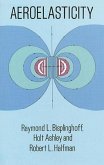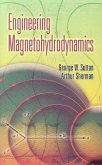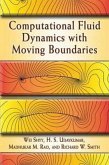Random Vibrations: Theory and Practice covers the theory and analysis of mechanical and structural systems undergoing random oscillations due to any number of phenomena— from engine noise, turbulent flow, and acoustic noise to wind, ocean waves, earthquakes, and rough pavement. For systems operating in such environments, a random vibration analysis is essential to the safety and reliability of the system. By far the most comprehensive text available on random vibrations, Random Vibrations: Theory and Practice is designed for readers who are new to the subject as well as those who are familiar with the fundamentals and wish to study a particular topic or use the text as an authoritative reference. It is divided into three major sections: fundamental background, random vibration development and applications to design, and random signal analysis. Introductory chapters cover topics in probability, statistics, and random processes that prepare the reader for the development of the theory of random vibrations and signal analysis. The second section develops this text's unique emphasis on the design of mechanical and structural systems for random vibration environments, with a focus on metal fatigue. The third section covers statistics, analysis of nonstationary random signals, the discrete Fourier transform, and the spectral analysis of random signals and systems driven by random inputs. Numerous examples and exercises are presented throughout the text, and key concepts are clarified with an abundance of figures, charts, and graphs. To help familiarize the reader with the types of signals that will be encountered in practice, many of the random signals shown in the text aretaken from actual random sources. Unequaled in the range of its coverage and the clarity of its presentation, Random Vibrations: Theory and Practice is both a suitable text for graduate level courses and an invaluable resource for mechanical, structural, and aerospace engineers. The most comprehensive text and reference available on the study of random vibrations Designed for graduate students and for mechanical, structural, and aerospace engineers, Random Vibrations: Theory and Practice encompasses all the key topics, including fundamental background material, random vibration development with applications to design, and random signal analysis. The broad scope of this text makes it useful both as a clear and thorough introduction to the field and as an authoritative reference for practitioners who wish to investigate special topics. Covers background topics in probability, statistics, and random processes Develops methods to analyze and control random vibrations Discusses how to avoid fatigue and fracture brought on by random vibration stresses Describes how to analyze random signals obtained from field and test measurements Provides detailed examples throughout the text with random signals taken from actual random sources Supplies an abundance of figures, tables, and charts that support and clarify the text material








